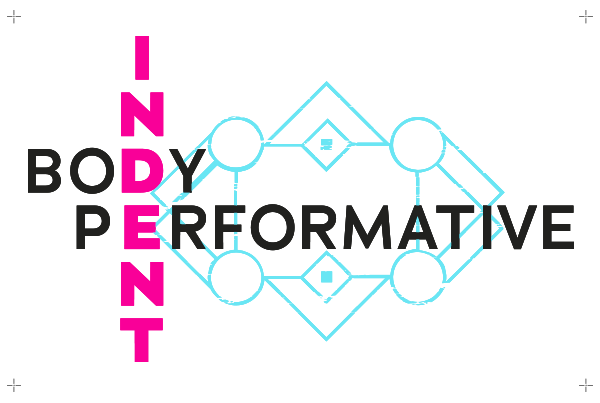STRATEGIES OF
RESISTANCE
ISSUE 1
Ranjana Dave | November 2018
What is the succulent, reactive potential of the body, vulnerable to ‘pressure’ but also capable of exerting it? How is it indented by, and in turn, able to indent, in the space and time of the now? Are its extremities entirely, physical and cellular, as a body that mediates its senses through technology, ‘watching’ on screens and ‘loving’ in hypertext? Can we leave this heterotopic notion of the body outside the studio space, severing the body from all its digital, social, historical, mechanical and philosophical extremities? Or is it time to disrupt our notion of the body, and ask of ourselves – where does the body begin and end, after all?
+ Read more
Shanti Pillai | November 2018
To make and interpret performance in relation to “resistance” can be an empowering methodology for both practitioner and scholar. Yet what does resistance mean? The aspirations the concept invites are not always met with rigour of attempt to define it. This essay takes a brief look at influential models for conceptualising power and opposition that developed in the social sciences and cultural studies in the US and Europe during the 80s and 90s as a means to illuminate the assumptions frequently operating behind current references to resistance in the arts and arts scholarship. The discussion asserts the need for a more complex orientation to resistance as an artistic objective and analytical rubric, and advocates greater reflexivity in seeking to align a work of contemporary performance with a dangerous and utopic act.
+ Read more
Christine Greiner | November 2018
Before being considered a language in its own right or becoming a field of studies, performance was an operator of destabilisation, the most significant political action of which would be to implode paradigms, models, habits and patterns. In an age of ‘artistic capitalism’, the author looks at the homegrown contexts of Brazil, where performance is used as a mode of rethinking communities.
Rahel Leupin | November 2018
Despite discourses of transnationalism, hybridity, globalisation, culturescapes and cosmopolitanism, the majority of art councils and arts institutions still function on the basis of national borders and passports. Financial engagement in the contemporary arts across the globe is dominated by the West and most often comes with implicit or even explicit connections and agenda-settings. Together with the artists Venuri Perera, Mallika Taneja, and Daniel Kok, the author seeks to vigilantly look at the contradictions of performance-making and curating along the North-South axis today and work through the questions: Who is actually performing with whom and under what conditions? And why now?
Nirmala Seshadri | November 2018
Asianness is the tag that is needed to justify the presence of the dancing body that is not trained in the western dance idiom. In Singapore, the classical Indian dancer (whether aware of it or not) exists at the intersection of multiple agendas – cultural essentialism, collective nostalgia for an imagined homeland, exoticism, multiculturalism, overt emphasis on religiosity, as well as an Indian nationalism that is increasingly mobile. In her essay, the author responds to a series of questions about ‘Asianness’, reflecting on choreographic strategies to circumnavigate the landscapes of aesthetics, politics and/or the arts market, which remains significantly dominated by the West?
Meghna Bhardwaj | November 2018
Proposing a methodology of studying contemporary dance practice, through its relationship to the embodiment of critique and sound-making, vis-à-vis its distancing from the employment of ‘harmonious’ and ‘melodic’ sounds in the process of choreography, the author chooses Padmini Chettur’s choreographic work Beautiful Thing 1 as her case study. Beautiful Thing 1 directly challenges the traditional idea of ‘music-accompanying-dance’ while aligning the extremely taut and edgy movements of a group of female dancers to sounds that may be called metronomic, acoustic, even silent or absent. How could the soundscape that the piece spans, as it lets the movements of female bodies emerge in a much-exposed and matter-of-fact manner, effectively replace the idea of rasa with friction as a proposed affect for the onlooker?
Urmimala Sarkar Munsi | November 2018
This paper tries to bring together different ways in which the woman named Draupadi becomes represented in performances around her in India - travelling across time and geopolitical spaces, through the performances of the scene of game of dice, with representational or derivative interpretations of Draupadi of Mahabharata. In its non-linear narrative, it attempts to see Draupadi’s travel through time and space of performative representations as choices of reflections put forward by performers, thus giving her a specific role as the representative of women as vulnerable subjects in Indian society.
Poorna Swami | November 2018
The image of the physical body—arms and legs and ribs and guts—holds visible presence in the way we recall India’s history of protest. This inherent potential in the physical body to be a succinct vehicle for, and symbol of, resistance is fertile ground for the choreography of protest in performance.
Kopano Maroga | November 2018
How can we think of ways of disidentifying with cultural modes that would have us be represented linearly, statically and monothematically? Kopano Maroga looks at the work of two artists, commenting on how they ‘choose differently’ in their work, insofar as the politics of representation are concerned.










![AIN’T I A [HU]MAN?](https://images.squarespace-cdn.com/content/v1/5bbf29a011f784481d96c6e4/1542610693558-X2JJWYKSTGIW4SFJZT0G/AIN%E2%80%99T+I+A+%5BHU%5DMAN%3F)